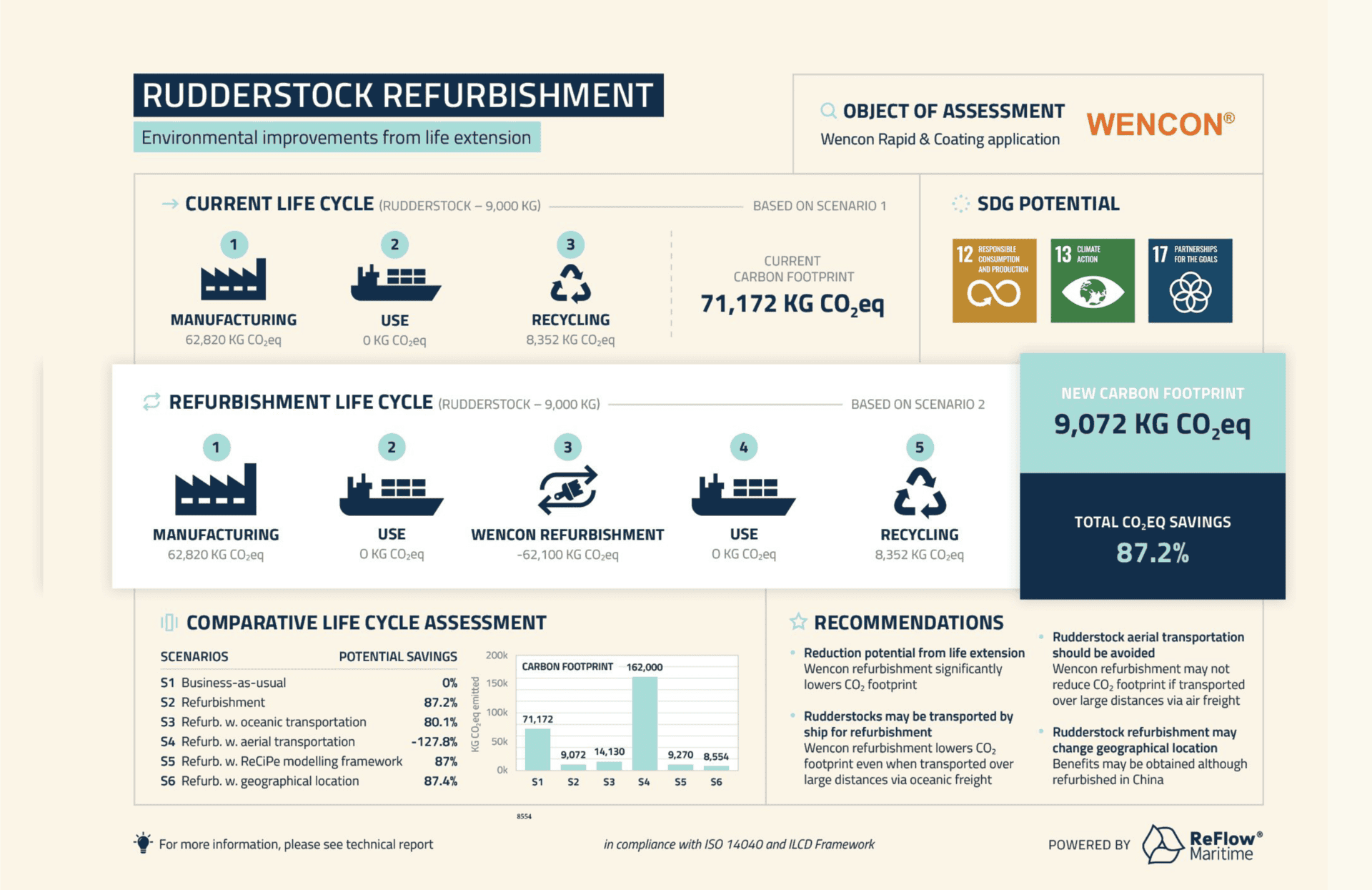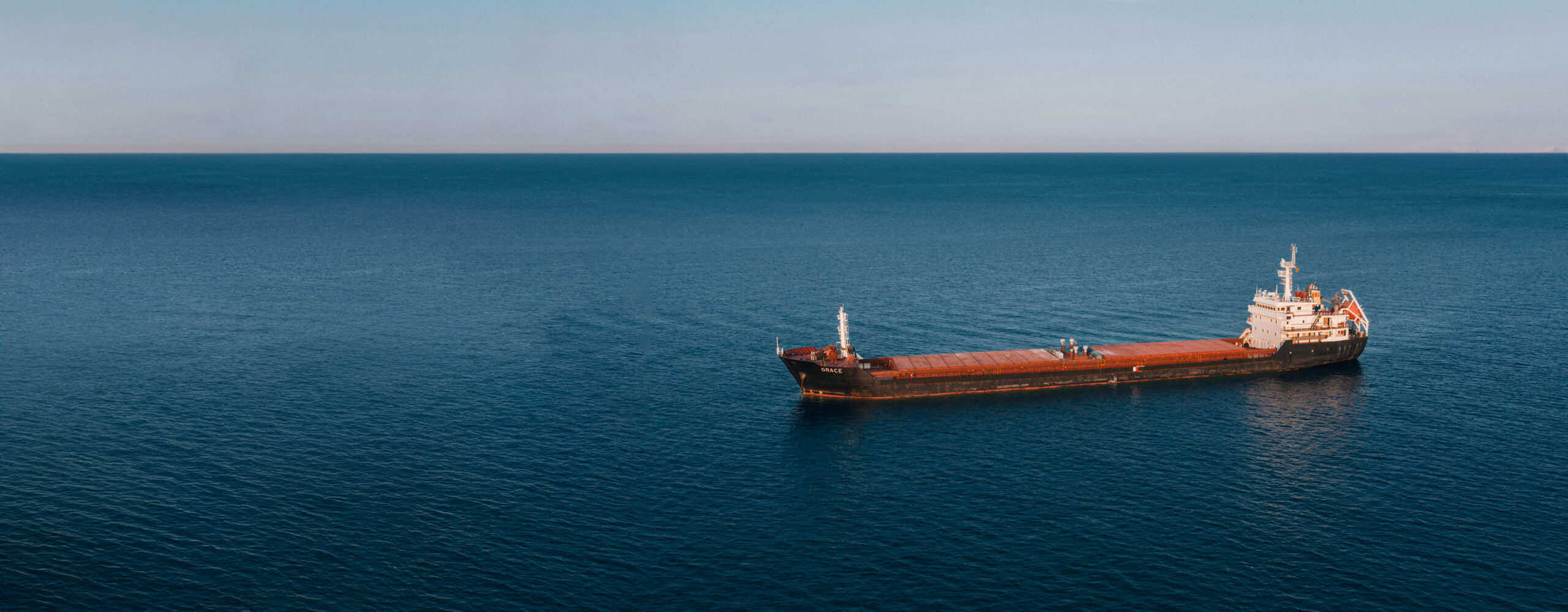News
November 26, 2020 · 2 min
Investigating Emission Savings Potential
Wencon set out to investigate the carbon footprint, using their Epoxy products to refurbish and protect an end-of-life Rudderstock, compared to replacing with a new. The results are significant savings on carbon emissions, time and costs.

Rudderstock refurbishment
The maritime industry is under pressure from both local governments, the UN and their customers to think sustainable solutions into their operation. The ambition from the International Maritime Organisation (IMO), is to reach carbon neutrality by 2050. Many efforts have already been initiated to reduce the CO2 Emissions through cleaner fuels, hull improvements and other innovative solutions.
Looking below the waterline
So far, the gaze has been set on the smoking ship funnels, and the so-called direct emissions from vessels. But there is an un-tapped potential for CO2 reductions just below the waterline. Research* shows, that there is an enormous savings potential, in in-direct emissions. When choosing to remanufacture instead of replacing with new, there is a potential of CO2 savings up to 90%.
Comparing with business-as-usual
To evaluate the carbon footprint of a Wencon solution, a specific part is chosen at the end of its life cycle. A lifecycle assessment (LCA) tool was chosen to compare a refurbishment, where the part is put it back into its first life-cycle, with a business-as-usual scenario, where the part, following a linear process, is replaced with a new. The LCA is completed by ReFlow Maritime, specialized in maritime sustainability, and completed under ISO 14040 standards.
The Case
The part, a rudderstock, made of 9 tonnes of forged steel, is suffering from bimetallic corrosion in the area between the liners/seal boxes and below the steering gear. The corrosion was found during dry docking and it is assessed by class that it will not be able to maintain its structural integrity until next docking, the choices are: refurbish or replace.
Repair instead of replace is: Sustainable, profitable, and fast
The financial savings and the time saved are considerable factors to take into account. On the environmental bottom line, this repair and life extension of the rudderstock gave a total of 87,2% CO2 EQ savings.
Think Circular
When looking at the vessels emissions as a whole, applying a circular perspective to parts that may be protected against corrosion and brought back into a second full lifecycle by repairing and rebuilding, the whole industry benefits. New market shares, economic advancement and lowered emissions are just some of the potential benefits to be harvested.
It just makes good sense, economic, time and for the environment
If you are interested in knowing more about this report, please contact: wencon@wencon.com

